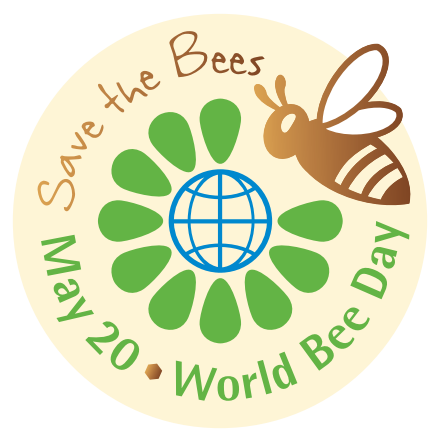Sunday marks the first annual World Bee Day! The result of a recently adopted UN resolution, May 20 is set aside to “spread awareness of the significance of bees” and lands on the birthday of Anton Janša, a Slovenian teacher of apiculture and pioneer of modern beekeeping.
We sat down with fourth-generation beekeeper Jamie Johnston to talk about how her bees play a role in U.S. food production and almond pollination – where every almond exists because a honey bee pollinating an almond blossom. Jamie keeps bees for her family business, Johnston Honey Farms in Colorado. She is responsible for the care of the farm’s beehives and owns of The Beekeeper’s Honey Boutique, a retail store that sells honey, beeswax candles, beauty products, and more – all sourced from her bees.
Why do you bring your bees to almond orchards during February and March?

Honey Boutique
Almond pollen is very nutritious for bees, and my hives consistently leave the almond orchards stronger after they get their first natural food source of the year from the almond blossoms. Renting out my hives to farmers for almond pollination is also the largest source of my income, so the bloom is an important time of the year for my company.
Why are almond blossoms good for bees?
The pollen and nectar of the blossoms is healthy for the hives. The pollen has a high protein complex which stimulates the queen to lay more eggs, producing stronger hives and allowing us to make more splits and nucs – nucleus colonies or small honey bee colonies created from larger colonies – in the spring and either grow our apiary or makeup losses.

Honey Boutique
How often are you able to split your hives?
We do it each spring because the hives are strong after almond blossom.
Where do the bees go after the almond pollination season and during winter?
After almond pollination, I bring the bees back to Colorado for honey production during the summer. They stay there until it’s time for them to head back to California in October/November - before the snow flies in Colorado!
Why is it important that beekeepers and farmers have a good relationship?
It’s mutually beneficial. What’s good for the bees is good for the almond farmer, so it is important to communicate before, during, and after bloom. This ensures there is a proper balance between protecting the crop and protecting the bees. You can’t wait until after your bees are in the orchard to discuss things like pesticide spraying, weather forecasts, and providing blooming plants to support bees before or after bloom. I have a direct line to each of the almond farmers I work with, and we talk regularly.
To learn more about the mutually beneficial relationship between bees and almonds, and beekeepers and almond farmers, check out this video. Happy World Bee Day!


